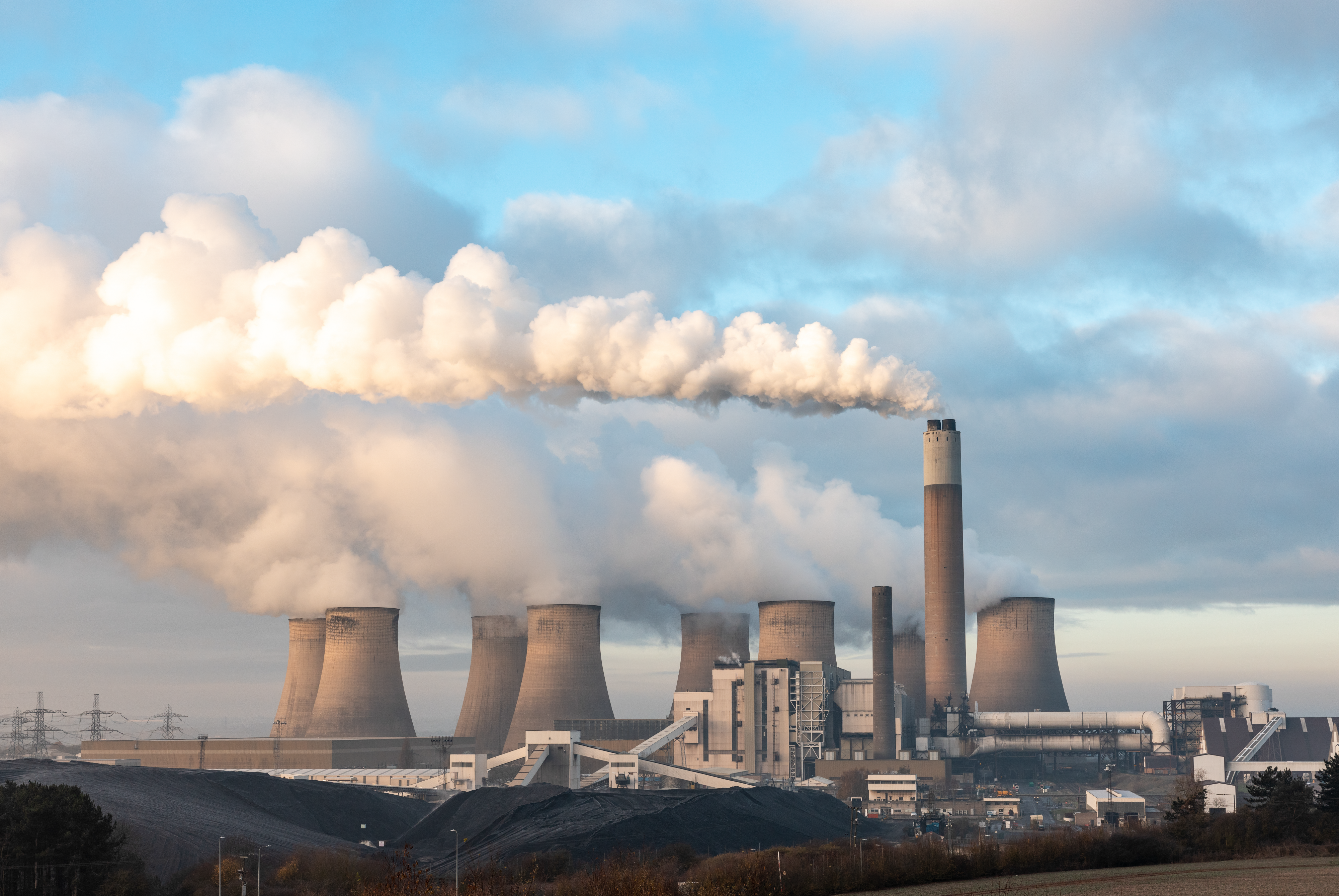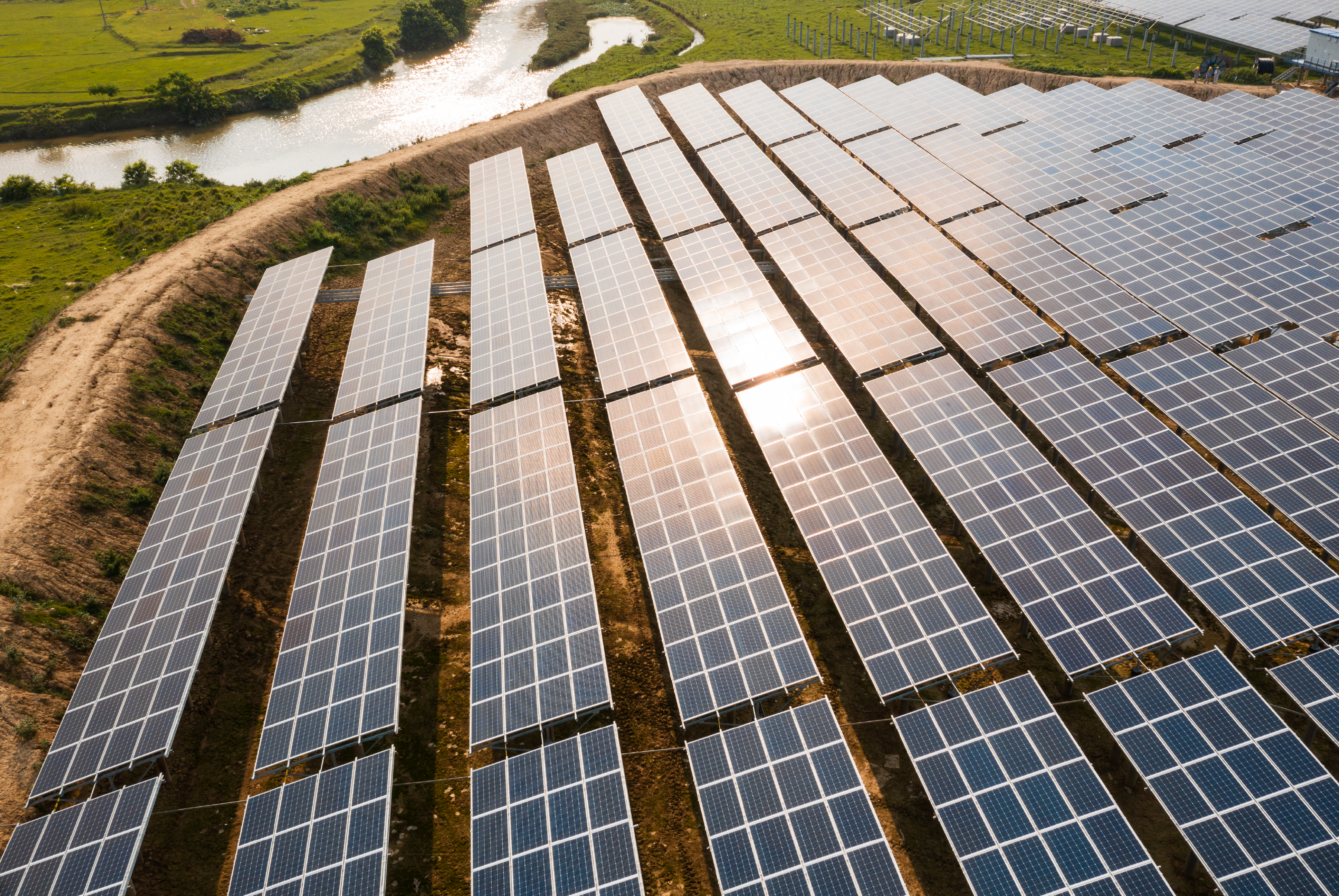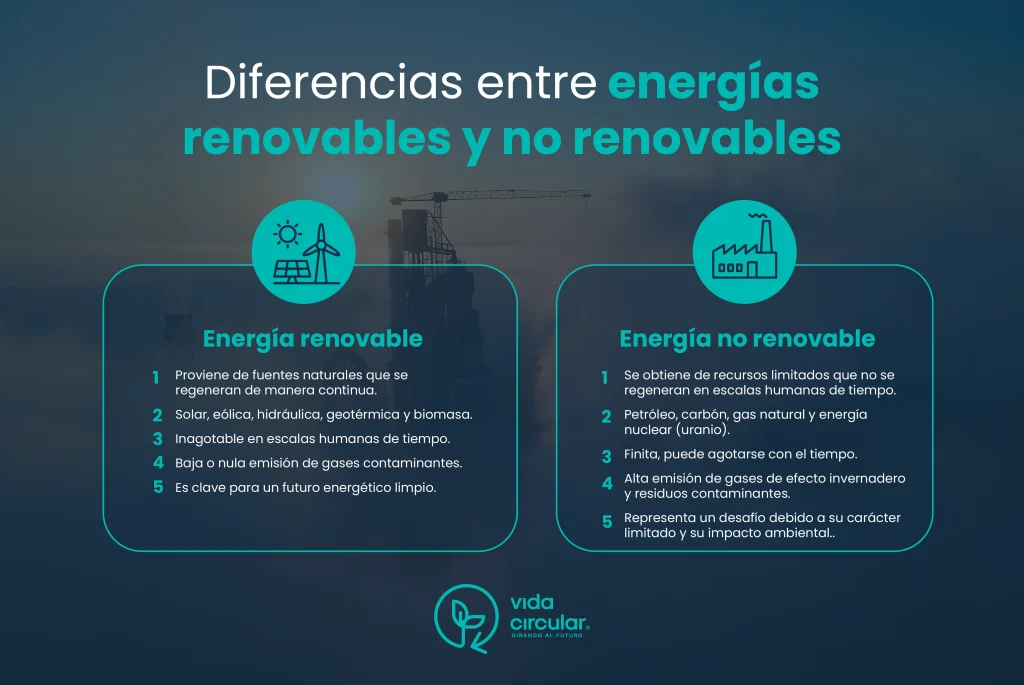
What are non-renewable energies and their characteristics?
Main sources of non-renewable energy
Non-renewable energies are essential for the functioning of our current society, but their limited nature and the impacts associated with their extraction and use invite us to reflect on the need to seek more sustainable alternatives. These sources have been pillars of industrial and technological development, but they also represent a challenge for the future due to their progressive depletion and environmental effects.
- Oil: It is the undisputed star among non-renewable energies. It is mainly used in transportation, from automobiles to airplanes, and is also the basis for producing plastics and other petrochemical derivatives. Its versatility and high demand make it a key resource, but its extraction and consumption generate significant greenhouse gas emissions, in addition to relying on limited reserves that are not renewed.
- Natural gas: Considered a "cleaner" option compared to coal and oil, natural gas is widely used to generate electricity and provide heat. Although its carbon emissions are lower, it is still a finite resource and its extraction, especially through methods such as fracking, can have significant environmental consequences.
- Coal: Coal was the undisputed protagonist of the Industrial Revolution and remains one of the main sources of electricity generation in many parts of the world. However, it is one of the fossil fuels with the highest greenhouse gas emissions, which has placed it at the center of energy transition debates.
- Nuclear energy: Often considered an interesting alternative because it does not emit CO₂ during its production, nuclear energy depends on minerals such as uranium, which are finite and require complex extraction and handling processes. In addition, the generation of radioactive waste and the risks associated with possible accidents pose significant challenges in its implementation.
Each of these sources has played a crucial role in our energy history, but they also confront us with the urgent need to evolve towards more sustainable and responsible systems. While non-renewable energies will remain part of the equation for some time to come, the focus must be on their efficient use and the transition to alternatives that will ensure a more balanced energy future.

Renewable and non-renewable energy: What is the difference?
Renewable energies
These energies come from sources that nature continuously regenerates, making them sustainable and virtually inexhaustible options. Clear examples include:
- Solar energy: Harnesses the sun's radiation, either through photovoltaic panels to generate electricity or thermal systems to heat water and other uses.
- Wind energy: Uses the power of the wind to move wind turbines that produce electricity. It is one of the cleanest and most efficient options.
- Hydropower: Generated from the movement of water, whether in rivers, dams or natural streams. Its use has been key in many regions to supply large energy demands.
Non-renewable energies
In contrast, non-renewable energies rely on resources that exist in limited quantities and do not regenerate on human time scales. These include:
- Fossil fuels: Such as oil, natural gas and coal, which were formed over millions of years from organic debris. They are highly efficient but are responsible for most carbon emissions.
- Nuclear energy: Although it does not generate direct CO2 emissions, it depends on uranium, a finite mineral that requires costly and complex processes for its extraction and handling.
What makes renewable energies special is their ability to contribute to a more sustainable energy future, while reducing greenhouse gas emissions and our dependence on finite resources.
As for non-renewable energies, despite their limitations, they remain essential in today's world. Their high energy density makes them indispensable for sectors such as transportation, heavy industry and large-scale electricity generation. Moreover, their infrastructure is already extensively developed, which keeps them as pillars of the global economy.
 Non-renewable energies
Non-renewable energies
 Renewable energies
Renewable energies
Why is it important to understand this difference?
While renewables hold the promise of a cleaner and more sustainable future, non-renewables still play a key role in the energy transition. The challenge now is not only to reduce dependence on non-renewable resources, but also to efficiently integrate renewable sources into existing energy systems. The key is to find a balance that makes it possible to meet current demands without compromising the resources of future generations.

Advantages and disadvantages of non-renewable energy sources
Non-renewable energy sources have been the main driver of global economic and technological development. However, their intensive use has brought with it advantages that have made them indispensable, but also drawbacks that underline the need to evolve towards more sustainable alternatives. Below, we analyze their strengths and challenges.
Advantages:
- High energy density: One of the main reasons why non-renewable energies dominate the global landscape is their ability to generate large amounts of energy with a small amount of resource. For example, oil and natural gas can power entire industries and meet the energy needs of entire cities with relative efficiency.
- Established infrastructure: Most of the world's economies are built on a non-renewable energy base. The technologies needed to extract, process and distribute oil, gas and coal are well developed, facilitating their large-scale use. In addition, this existing infrastructure reduces upfront costs compared to the development of new renewable technologies.
- Short-term availability: Although they are finite resources, fossil fuels are still readily available in most markets. This ensures a reliable and steady supply to meet current energy demand, especially in developing countries that still rely heavily on these sources.
Disadvantages:
- Environmental impact: One of the greatest challenges of non-renewable energies is their contribution to climate change. The burning of fossil fuels releases large amounts of greenhouse gases, such as CO2, which increase global temperatures and affect ecosystems. In addition, the extraction of these resources can cause significant damage to the environment, such as deforestation, water pollution and soil degradation.
- Limited resource: Despite their current availability, these sources have a limited lifespan. As oil, gas and coal reserves decline, extraction costs increase, and uncertainty about future energy security intensifies. This gradual depletion calls for an urgent rethinking of our energy sources.
- Geopolitical dependence: The unequal distribution of non-renewable resource reserves in the world creates political and economic tensions. Some countries control a large part of these resources, making them key players in the global energy market. This can lead to price fluctuations, import dependence and international conflicts.
The transition to renewable energies is crucial to mitigate the negative effects of non-renewable energies. However, it is important to recognize that both will continue to play a role in the global energy landscape in the coming years.
Conclusion on renewable energies
Understanding non-renewable energies leads us to reflect on the role they have played in our development and the challenges they pose for the future. Although their use has been key to the industrialization and progress of many societies, we are also aware that their environmental impact and their limited nature require us to rethink how we manage our energy needs.
It is not about demonizing these sources, but about using them responsibly as we move toward a more sustainable energy transition. We believe it is crucial to focus on efficiency, reducing emissions and, above all, investing in renewable technologies that allow us to rely less on finite resources. There is still time to make decisions that ensure a balance between meeting current demands and protecting the future of the planet. In the end, change begins with awareness and is consolidated with action.




